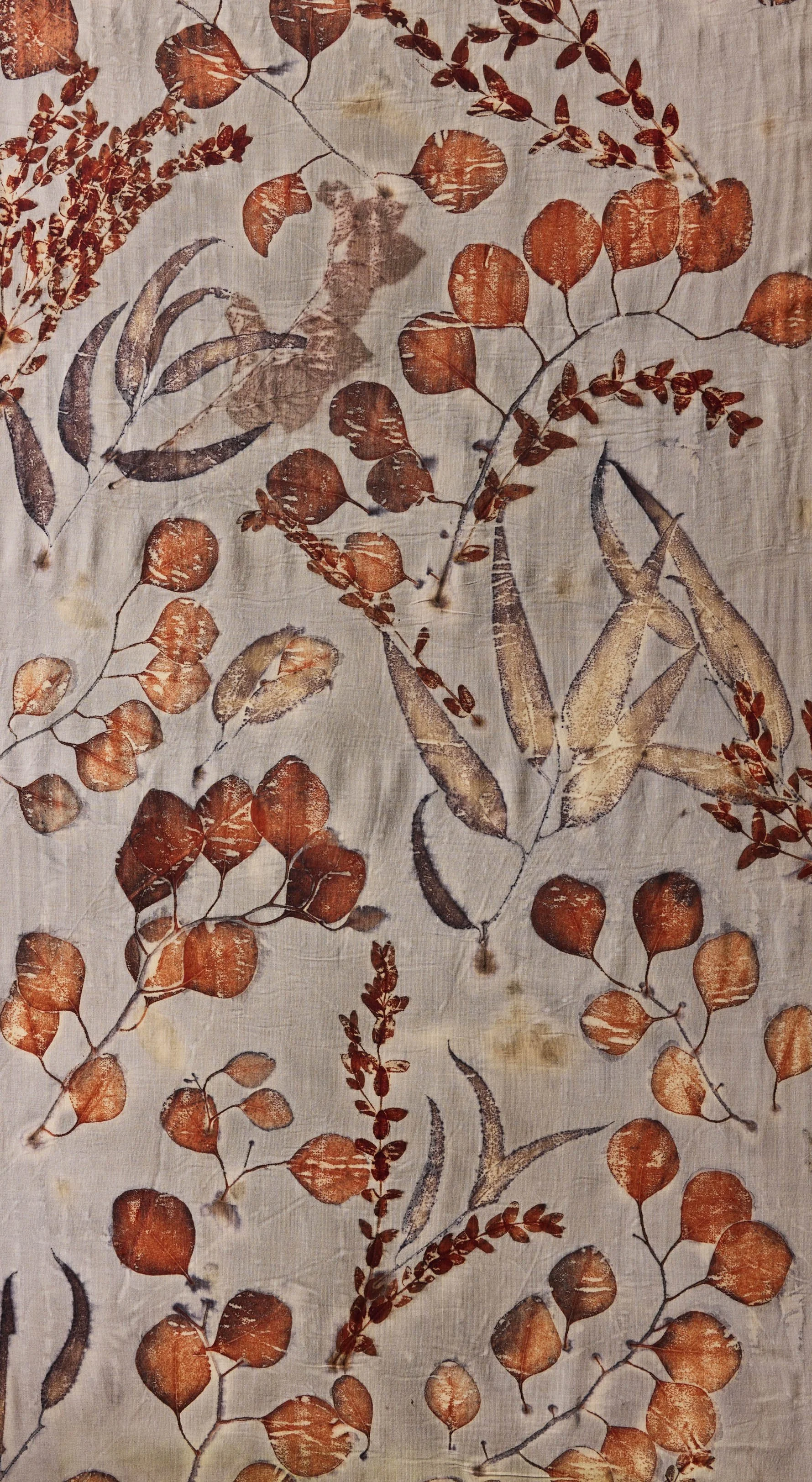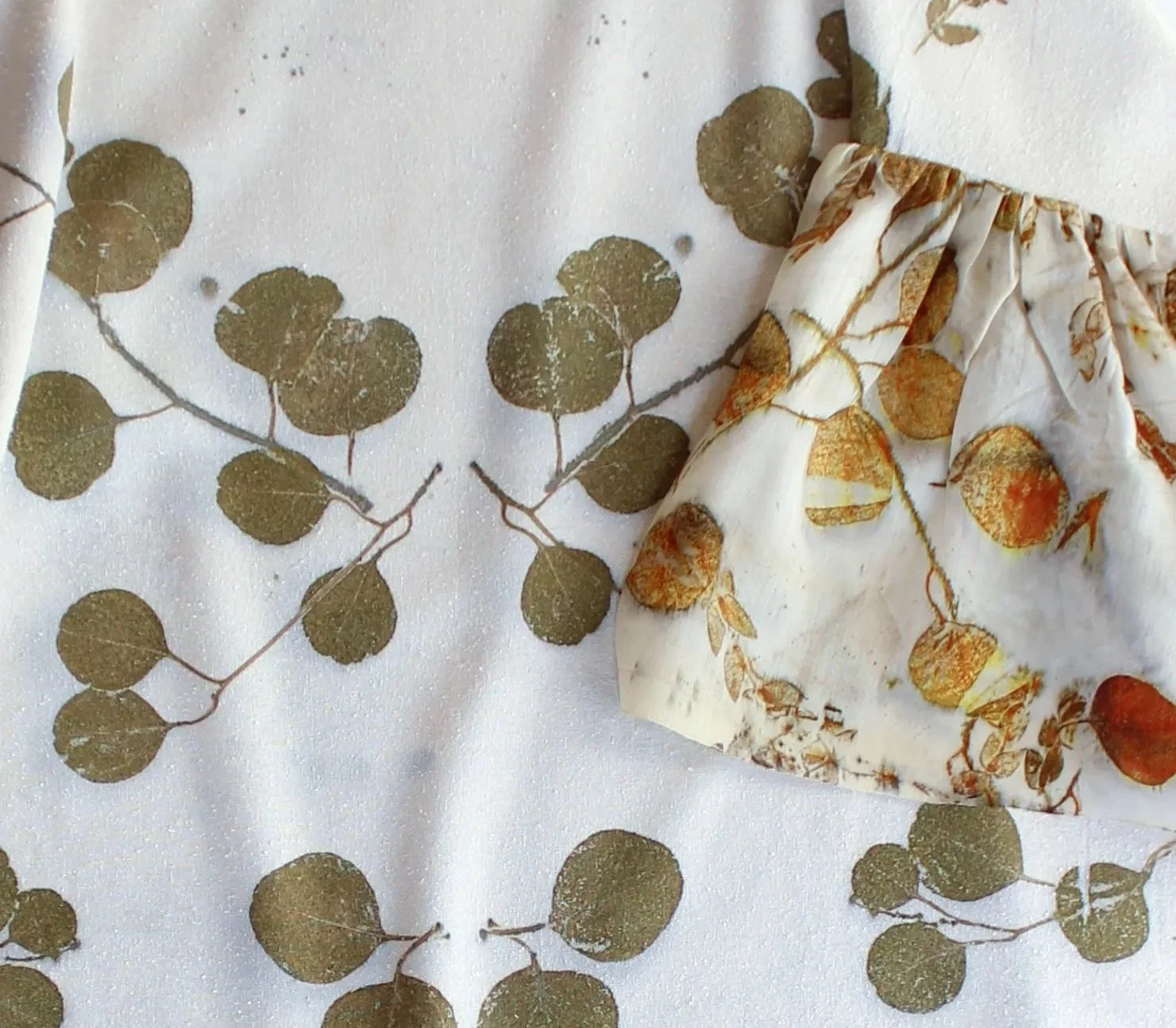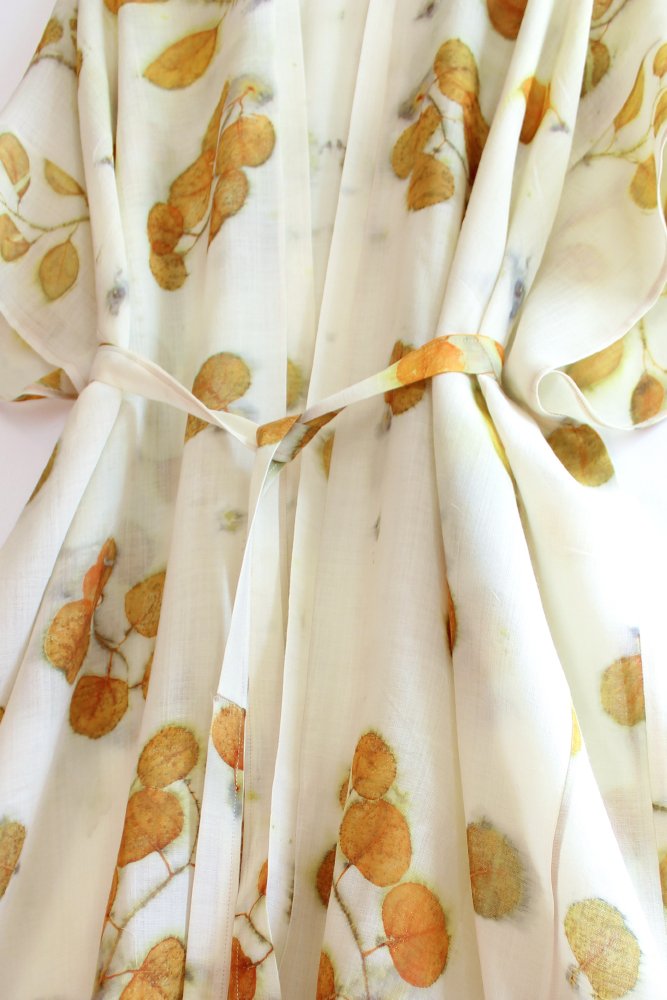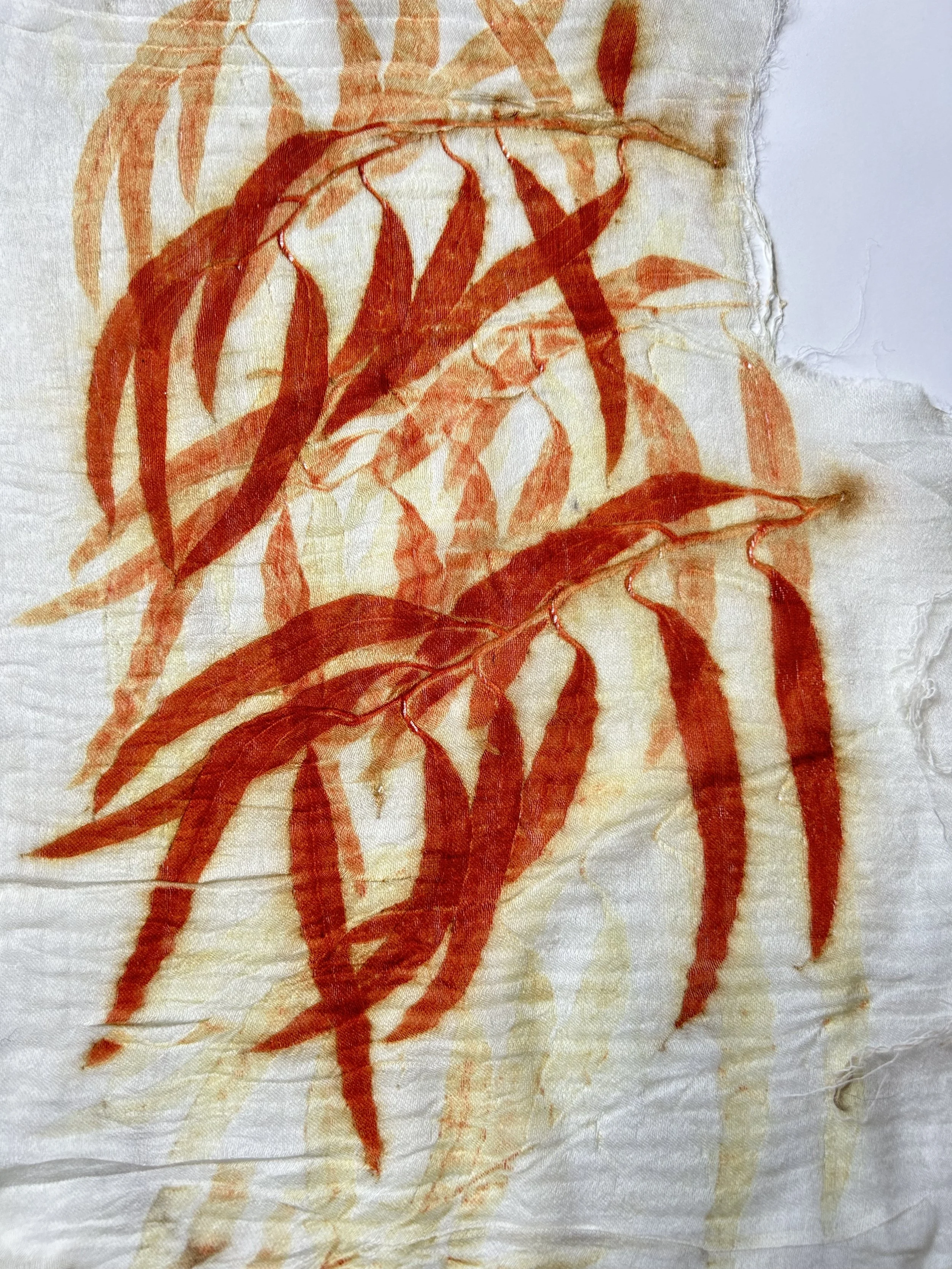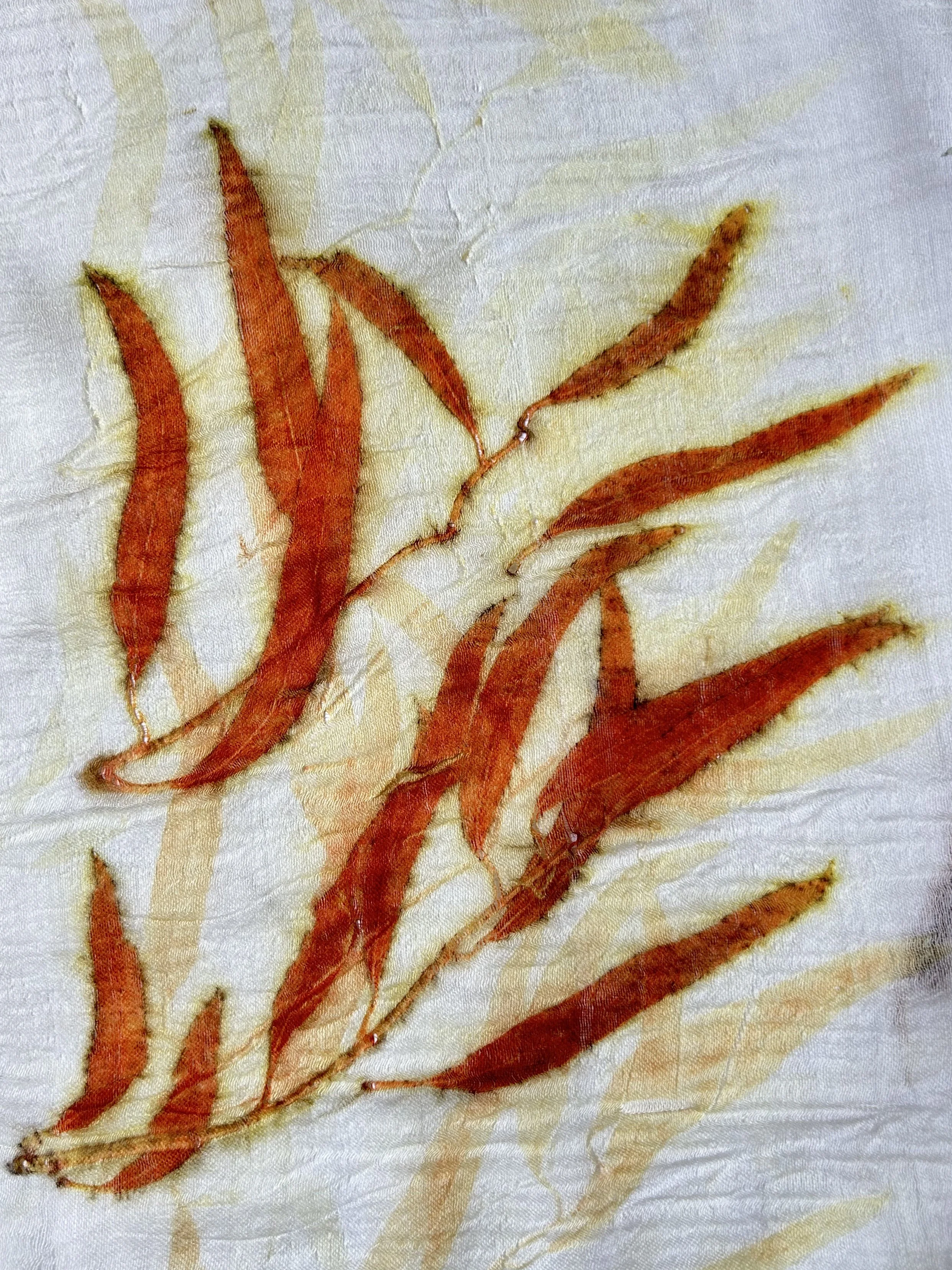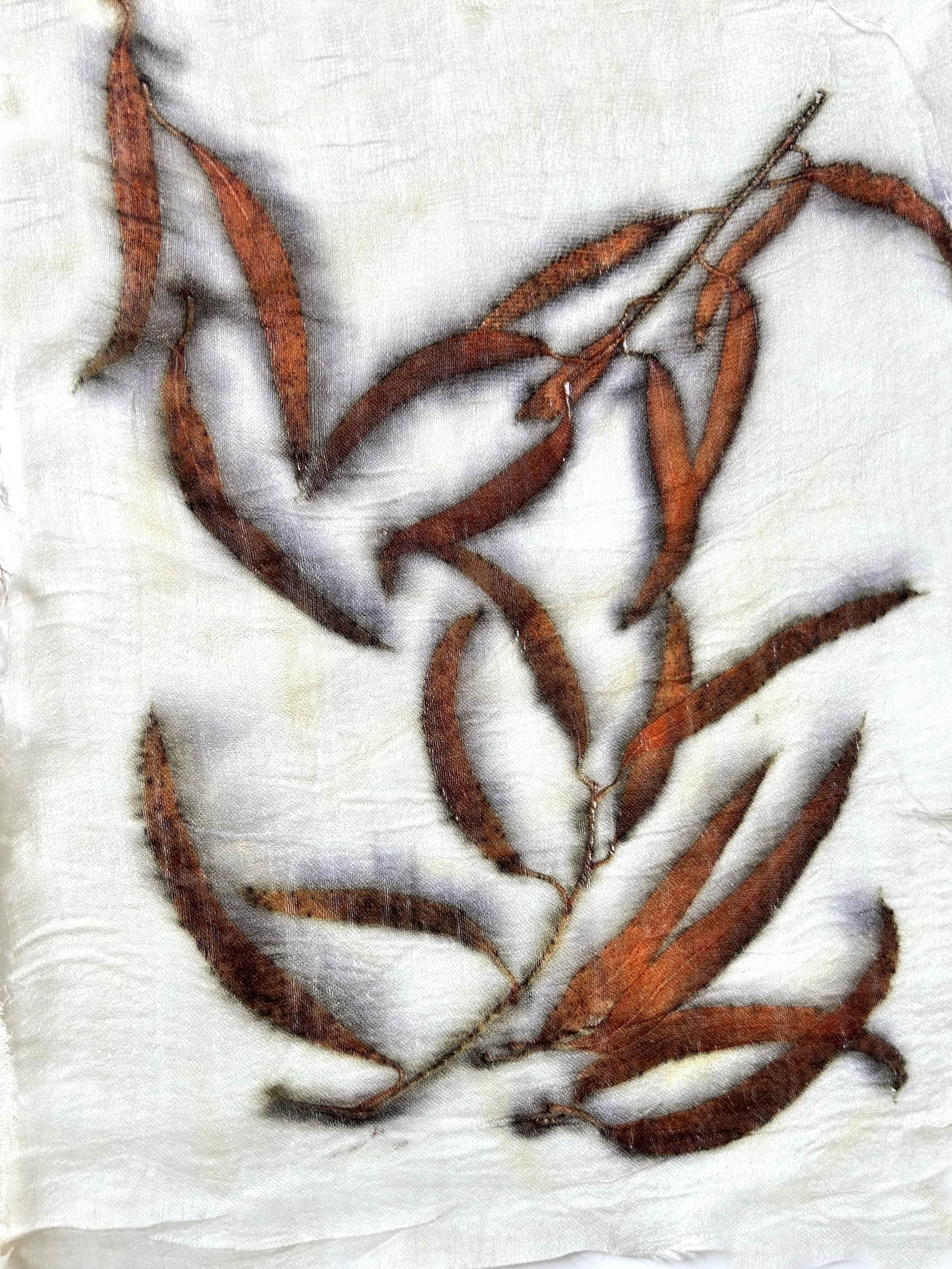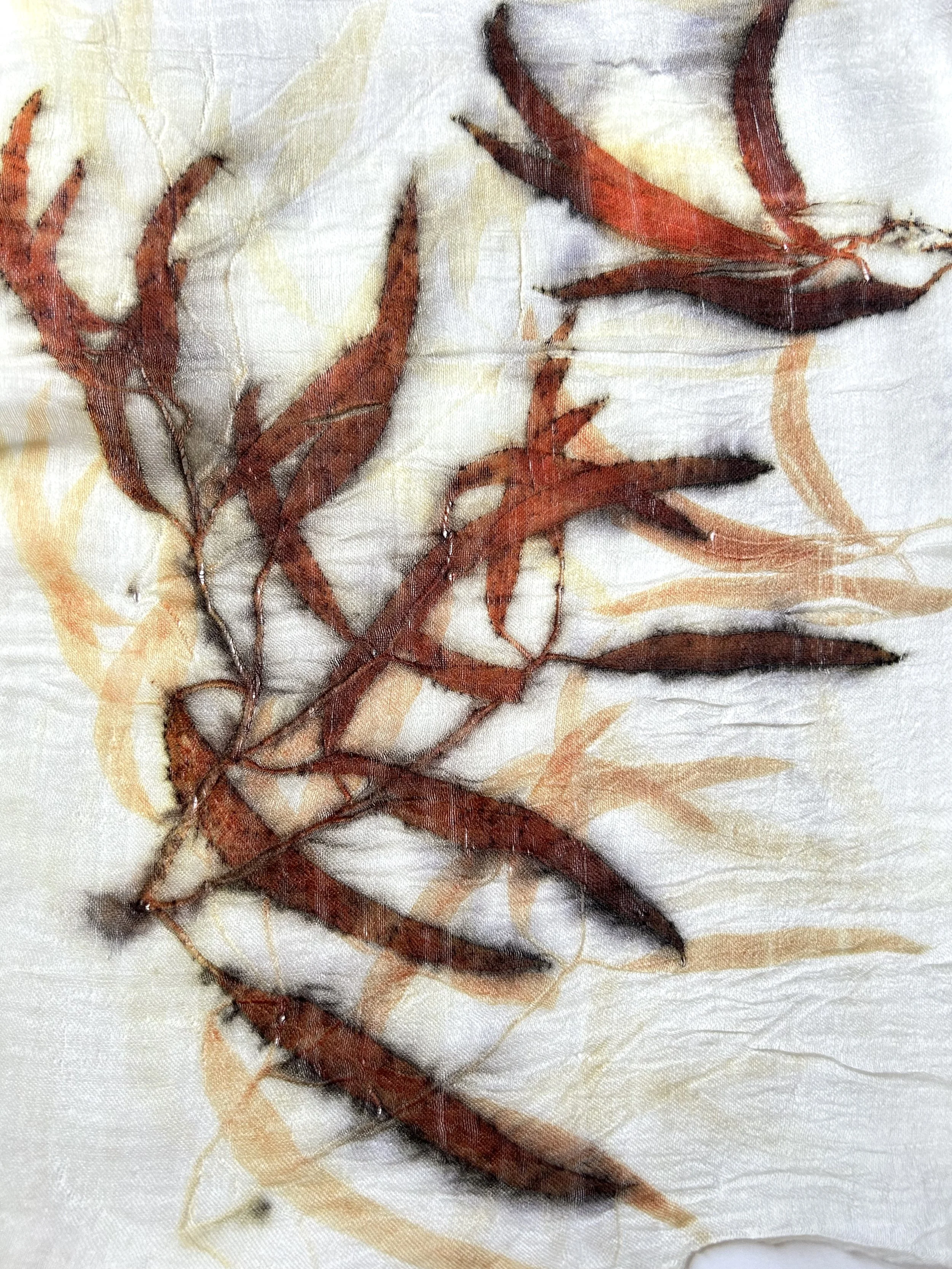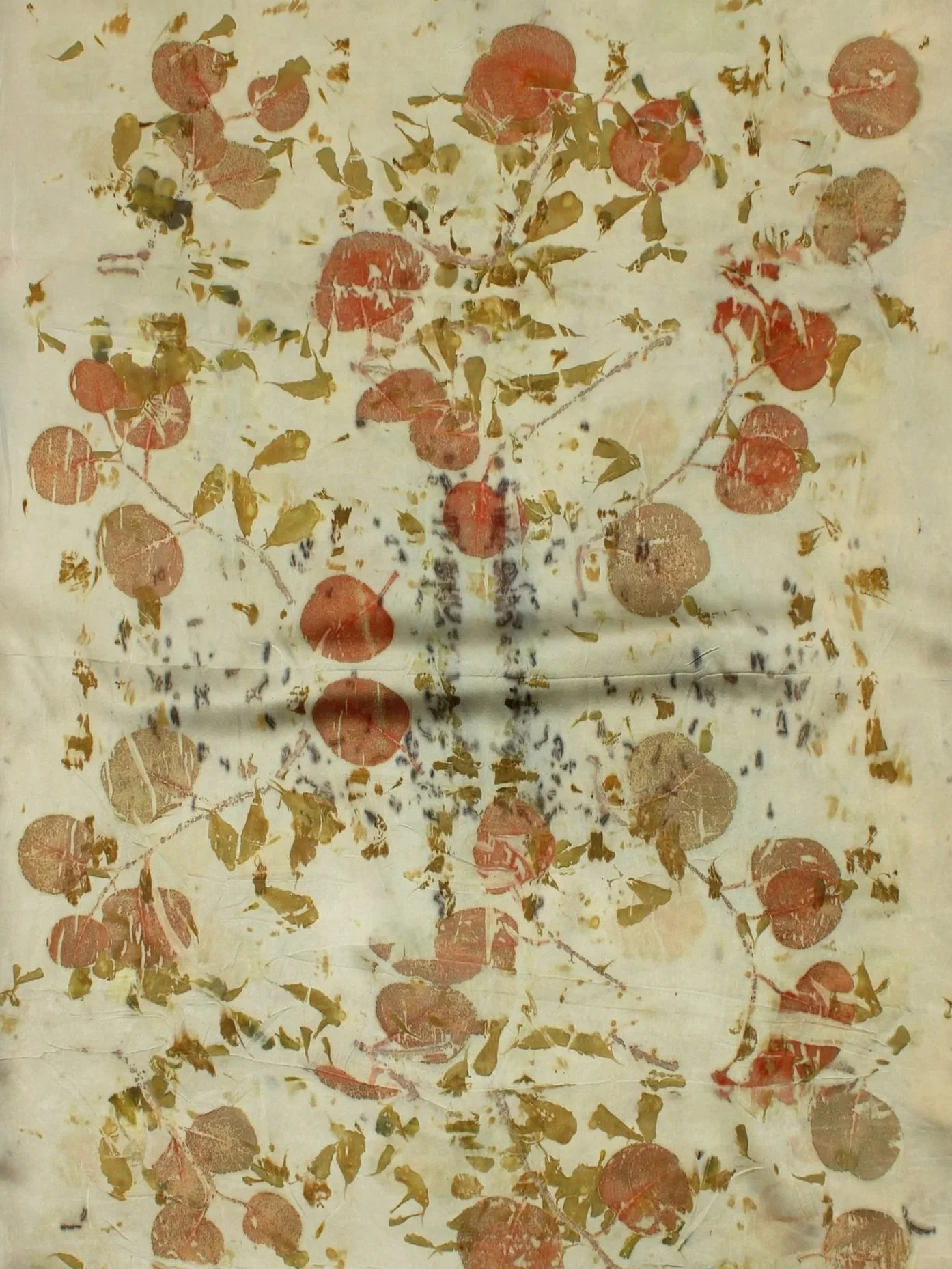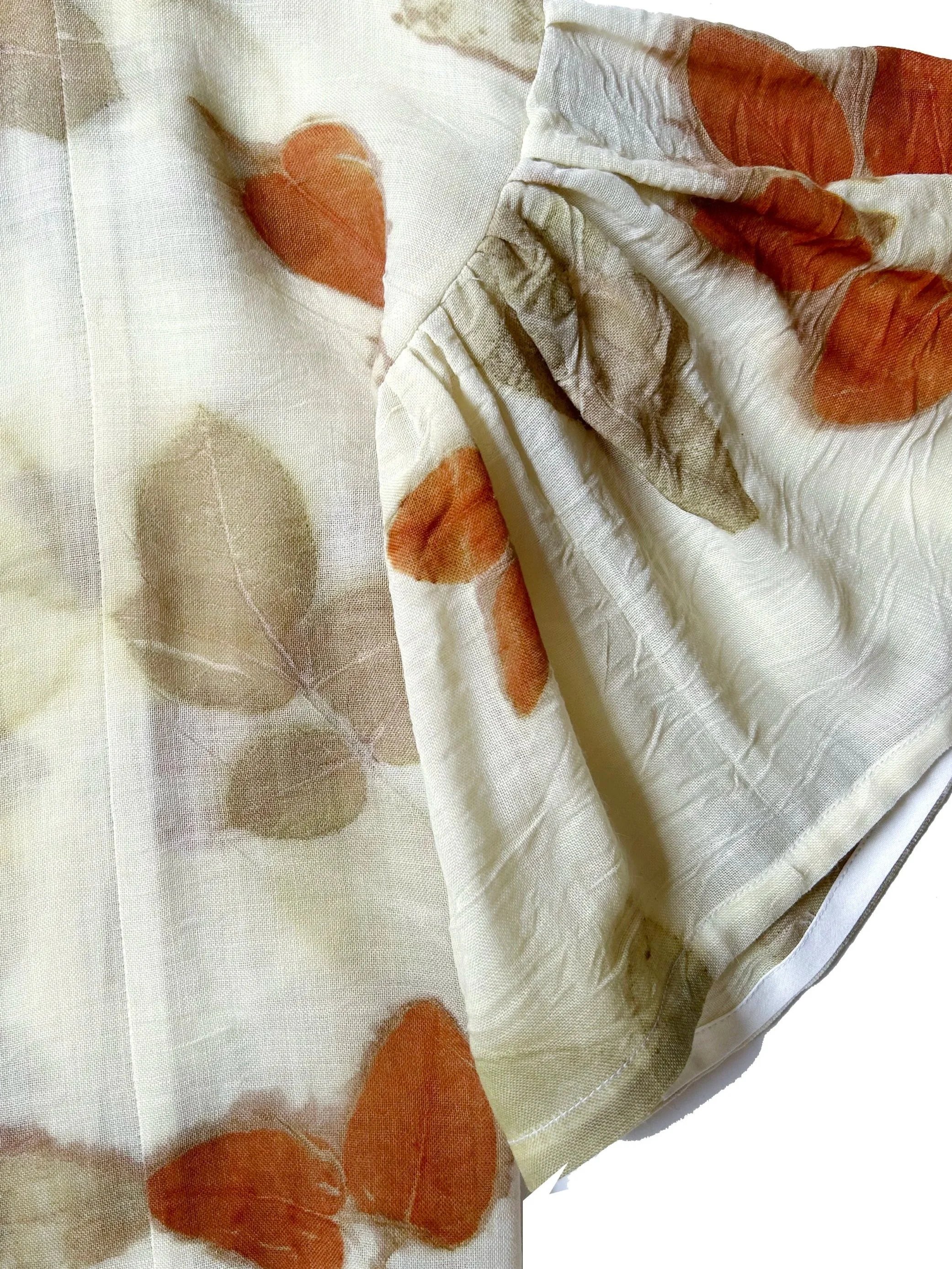Printing Red with Eucalyptus Leaves
Organic merino wool is a gorgeous fabric for printing eucalyptus on. This one was created with a pomegranate “dye blanket”… More techniques like this can be learned in my Printing with Colorful Backgrounds course!
The sleeves and hem of this dress are made from a silk/wool voile. Notice how much redder the silk/wool fabric prints than the silk noil fabric that makes up the body of the dress. Both were mordanted in alum and iron.
Eucalyptus and protein fibers are a match made in heaven. You can actually print both silk and wool with eucalyptus leaves without any mordant or modifier. Surprisingly with wool, when using no mordant at all, the most vivid red vermillion can be achieved. The dress pictured ABOVE features raw silk noil used for the body of the dress and a silk/wool blend for the gathered sleeve— notice how the same leaves print orange on the wool and green on the silk?
The Flora Obscura FOLIA wrap: silver dollar eucalyptus printed on organic merino wool voile…
When it comes to using botanicals for eco-printing, eucalyptus stands out as an exception to the usual rule. Unlike many plants or natural dyes that tend to turn brown when exposed to very high heat, eucalyptus leaves require prolonged heating for achieving a red print. The choice of heat source also plays a vital role in the process. While hot plates may fall short in reaching the necessary temperature, a gas stove or fire is recommended for optimal results— I recommend steaming the bundles for a minimum of 90 minutes. It is essential to monitor the water levels during the process to prevent the bundles from being singed or the water from evaporating and causing disastrous conditions. Ensuring a tight-fitting lid on the pot aids in maintaining the required temperature for the eco-printing process.
Some recommended types for orangey-red are:
Eucalyptus Sideroxylon (red iron bark)
Eucalyptus Cinerea (silver dollar)
Eucalyptus Polyanthemos (silver dollar)
Eucalyptus Nicholaii (peppermint gum)
Euc. Populnea (poplar box)
Sally Blake has a well known helpful database that lists eucalyptus varieties with red leaves. It was made with the Australian National Botanical Garden.
Eucalyptus Nicholaii (peppermint gum)
USE FRESH EUCALYPTUS LEAVES
Eucalyptus does not yield vivid red prints on cellulose fabrics like cotton or linen. To achieve vibrant red prints, protein fabrics are recommended. Among the protein fabrics, wool generally prints more red than silk might.
When it comes to preserving Eucalyptus leaves, freezing is the best bet as fresh leaves print more crisply. If you have dried Eucalyptus leaves, simply soak the dried leaves in tepid water overnight to restore their freshness. For frozen leaves, defrosting them will bring them back to their original state. These simple yet effective methods allow you to enjoy the beauty and benefits of Eucalyptus for an extended period.
Below you’ll find four samples of eucalyptus printed on silk/wool voile. You’ll notice that even when using a barrier of painters plastic, the eucalyptus had the power to print through the plastic— which is why there are ghost prints of leaves, especially in the first sample. The sample printed with an iron blanket does not have ghost prints due to the fact that there was an additional layer of fabric blocking further penetration. Eucalyptus is so full of tannin that you can reuse leaves that you have already printed with until they have no more pigmentation— or in turn, you could make a tannin-rich bath by simmering the used leaves.
Eucalyptus on wool with NO mordant.
Eucalyptus on wool. Alum triformate mordant .
Eucalyptus on wool: Aluminum Triformate mordant and iron blanket.
Eucalyptus on wool: Aluminum Triformate mordant and iron dip.
Silver dollar euc. on silk.
Silver dollar euc. on silk.
Silver dollar euc. on wool voile.
The red from eucalyptus is one of nature’s most generous gifts — earthy, vivid, and alive. Each print on silk or wool carries the warmth of the plant.
🌿 Ready to begin your own dye journey? Discover my beginner-friendly botanical printing classes and e-books → Start Creating

